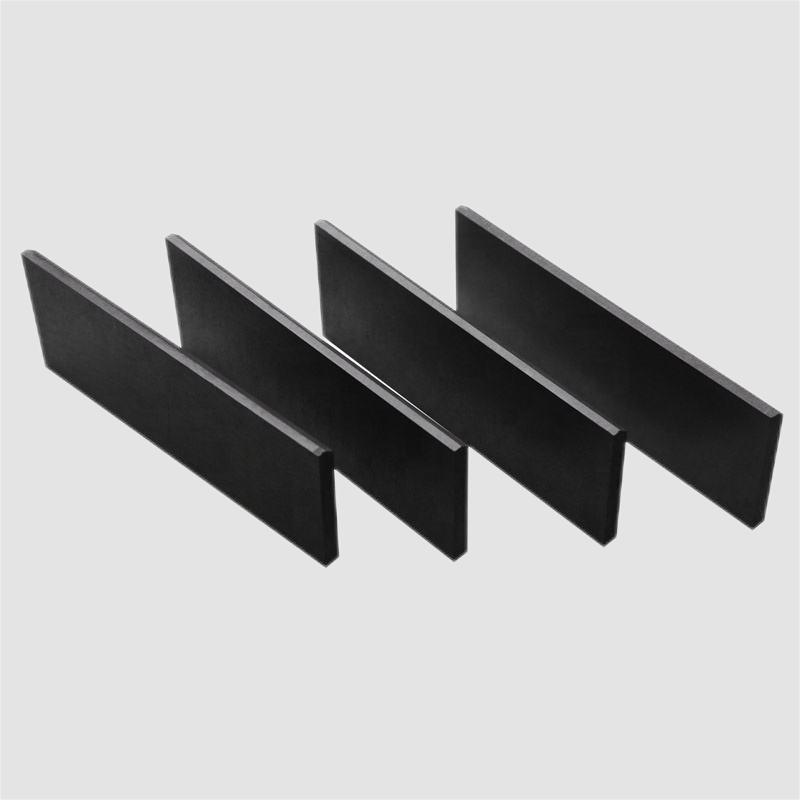
The use of graphite products is much higher than we expected, so what are the uses of graphite products that we are currently familiar with?
1、 Used as a conductive material
When smelting various alloy steels, ferroalloys, or producing calcium carbide (calcium carbide) and yellow phosphorus using an electric arc furnace or submerged arc furnace, a strong current is introduced into the melting zone of the electric furnace through carbon electrodes (or continuous self baking electrodes - i.e. electrode paste) or graphitized electrodes to generate an arc, converting electrical energy into heat energy, and raising the temperature to around 2000 degrees Celsius, thereby meeting the requirements of smelting or reaction. Metal magnesium, aluminum, and sodium are generally produced by molten salt electrolysis. At this time, the anode conductive materials of the electrolytic cell are all graphite electrodes or continuous self baking electrodes (anode paste, sometimes pre baked anode). The temperature of molten salt electrolysis is generally below 1000 degrees Celsius. The anode conductive materials used in salt solution electrolysis cells for the production of caustic soda (sodium hydroxide) and chlorine gas are generally graphitized anodes. The conductive material for the furnace head of the resistance furnace used in the production of silicon carbide also uses graphitized electrodes. In addition to the above purposes, carbon and graphite products are widely used as conductive materials in the motor manufacturing industry as slip rings and brushes. In addition, they are also used as carbon rods in dry batteries, arc light carbon rods for searchlights or arc light generation, and anodes in mercury rectifiers.
Graphite conductive assembly
2、 Used as refractory material
Due to the ability of carbon and graphite products to withstand high temperatures and have good high-temperature strength and corrosion resistance, many metallurgical furnace linings can be built with carbon blocks, such as the bottom, hearth, and belly of iron smelting furnaces, the lining of ferroalloy furnaces and calcium carbide furnaces, and the bottom and sides of aluminum electrolytic cells. Many crucibles used for smelting precious and rare metals, as well as graphitized crucibles used for melting quartz glass, are also made from graphitized billets. Carbon and graphite products used as refractory materials should generally not be used in oxidizing atmospheres. Because carbon or graphite quickly ablates under high temperatures in an oxidizing atmosphere.
3、 Used as a corrosion-resistant structural material
Graphitized electrodes impregnated with organic or inorganic resins have the characteristics of good corrosion resistance, good thermal conductivity, and low permeability. This type of impregnated graphite is also known as impermeable graphite. It is widely used in the production of various heat exchangers, reaction tanks, condensers, combustion towers, absorption towers, coolers, heaters, filters, pumps, and other equipment. It is widely used in industrial sectors such as petroleum refining, petrochemical, hydrometallurgy, acid and alkali production, synthetic fibers, papermaking, and can save a lot of metal materials such as stainless steel. The production of impermeable graphite has become an important branch of the carbon industry.
Graphite trough boat
4、 Used as a wear-resistant and lubricating material
Carbon and graphite materials not only have high chemical stability, but also have good lubrication properties. It is often impossible to improve the wear resistance of sliding components using lubricating oil under high-speed, high-temperature, and high-pressure conditions. Graphite wear-resistant materials can operate without lubricating oil in corrosive media at temperatures ranging from -200 to 2000 degrees Celsius and at high sliding speeds (up to 100 meters/second). Therefore, many compressors and pumps that transport corrosive media widely use piston rings, sealing rings, and bearings made of graphite materials. They do not require the addition of lubricants during operation. This wear-resistant material is made by impregnating ordinary carbon or graphite materials with organic resin or liquid metal materials. Graphite emulsion is also a good lubricant for many metal processing (such as wire drawing and tube drawing).
Graphite sealing ring
5、 As a high-temperature metallurgical and ultrapure material
The structural materials used in production, such as crystal growth crucibles, regional refining containers, brackets, fixtures, induction heaters, etc., are all processed from high-purity graphite materials. Graphite insulation boards and bases used in vacuum smelting, as well as components such as high-temperature resistance furnace tubes, rods, plates, and grids, are also made of graphite materials. see more at www.futmetal.com
Post time: Sep-24-2023
